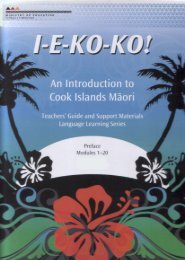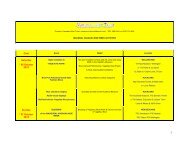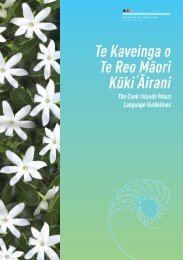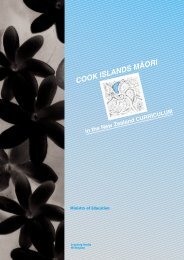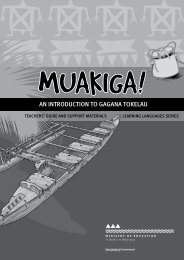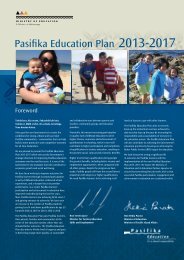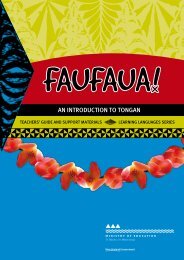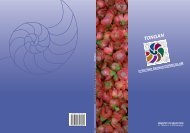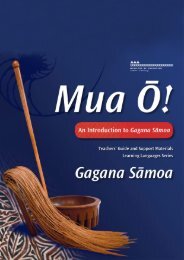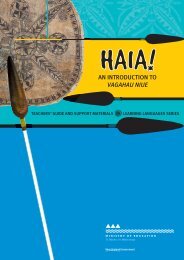Ta'iala mo le Gagana SÄmoa - Pasifika Education Community
Ta'iala mo le Gagana SÄmoa - Pasifika Education Community
Ta'iala mo le Gagana SÄmoa - Pasifika Education Community
You also want an ePaper? Increase the reach of your titles
YUMPU automatically turns print PDFs into web optimized ePapers that Google loves.
• identifying a prob<strong>le</strong>m at school, such as the quality of the food in the school canteen, and listingsome possib<strong>le</strong> solutions;• reading a text about a disastrous event, such as a volcanic eruption or tsunami, and writing atext that advises readers about possib<strong>le</strong> precautions;• matching captions describing what peop<strong>le</strong> are about to do with appropriate pictures, such as aperson carrying a skateboard or an empty shopping bag;• analysing information on an issue and presenting a convincing argument either for or againsta particular course of action;• producing first drafts, showing evidence of pre-writing processes such as analysing taskrequirements, generating ideas, and gathering information;• reading one another’s written texts and reviewing them against specified criteria.<strong>Gagana</strong> va‘aia: Mai<strong>mo</strong>aina ma <strong>le</strong> fa‘atinogaVisual language: Viewing and presenting or performingStudents could be <strong>le</strong>arning through:• explaining aspects of a cultural event that uses different media;• researching and presenting findings on a significant art form;• preparing brochures, posters, and photos to pro<strong>mo</strong>te a particular event, for examp<strong>le</strong>, a schoolfestival, White Sunday, or Sā<strong>mo</strong>a’s Independence Day;• using traditional materials and patterns to convey meaningful representations of items oroccasions that have cultural significance;• using diagrams, charts, and other visual tools to support a presentation on an aspect ofaganu‘u fa‘asā<strong>mo</strong>a;• interviewing expert informants and recording, editing, and critiquing their own interviews;• comparing aspects of different cultures for examp<strong>le</strong>, weddings or funerals, and analysing theirvisual and verbal features;• preparing and giving a talk to younger children, using appropriate protocols, and then seekingfeedback from the audience about their effectiveness as a speaker;• ro<strong>le</strong>-playing the use of polite language in a specified situation;• comparing the use of visuals in various presentations – live, video, or static.85For classroom language <strong>le</strong>arning activities to be effective in pro<strong>mo</strong>ting <strong>le</strong>arning, teachers needto consistently <strong>mo</strong>nitor their students’ progress, provide quality feedback, and offer guidance asstudents make progress in achieving the objectives. Effective teachers encourage their studentsto <strong>mo</strong>nitor their own progress and to develop effective <strong>le</strong>arning strategies.All activities need to be designed with the goal of communication in mind, because theCommunication strand specifies the objectives that students are to achieve at each <strong>le</strong>vel.See earlier sections (pages 19–22) and refer also to The New Zealand Curriculum for furtherinformation on Effective Pedagogy (pages 34–36) and Assessment (pages 39–41).



